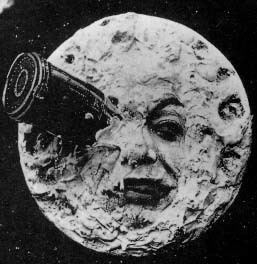 | ||
Because of its extreme difficulty and otherworldly nature, a successful Moon landing is viewed as being among humanity's greatest achievements. A Moon landing combines three essential elements: science, a description of "what" to do that conforms to the physical laws of the universe; technology, a means of "how" to do it using engineering and machines; and finally imagination, the human compulsion of "why" to do it.
Particularly in the United States, works of fiction helped to create the will to go the moon by creating a narrative that allowed people to feel good about themselves and their country in the face of the turbulent events of the 1950s and 1960s, when the Cold War was at its height. There was Soviet interest in science fiction literature and cinema, too, during the first half of the 20th Century—but it tended to focus on Mars landings rather than Moon landings. Key examples include the novel Red Star (1908) by Alexander Bogdanov and the film Aelita (1924) by Yakov Protazanov.
Well before the technology and knowledge of physical laws became sufficiently advanced to allow manned space-flight, going to the Moon was the dream of many people. With the passage of time, the idea of a Moon landing became a common trope in science fiction literature and cinema. Below is a partial list of notable "Moon landings" depicted in works of art.
